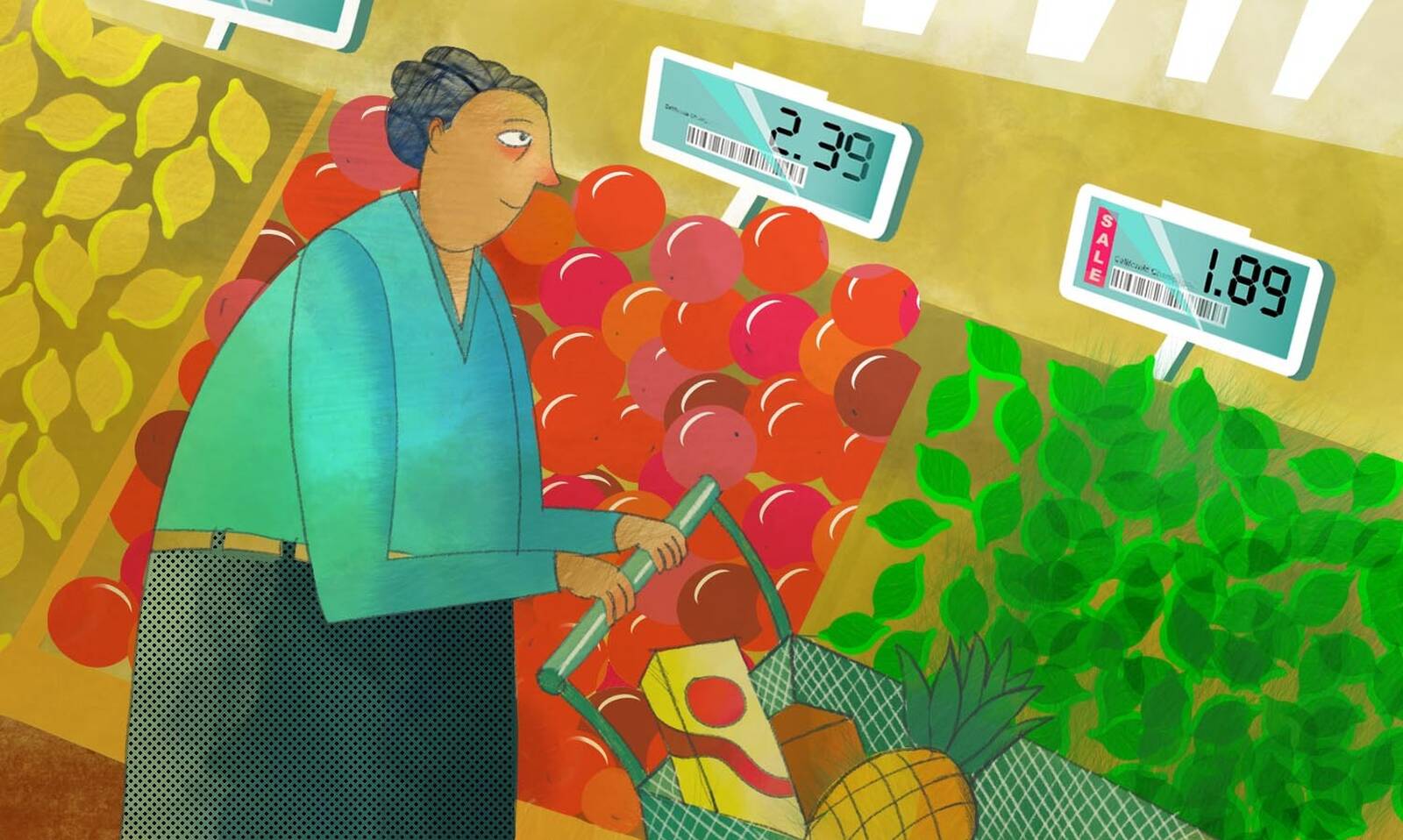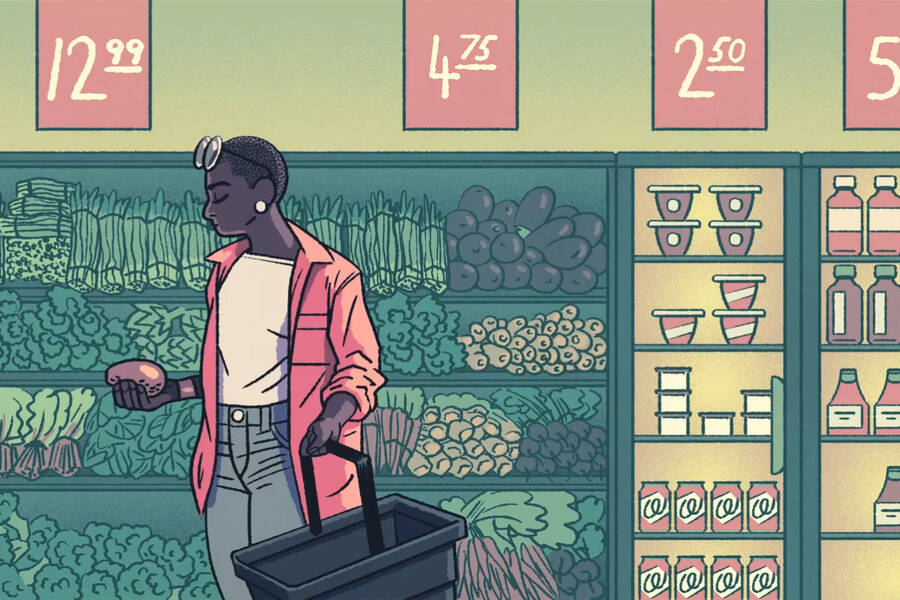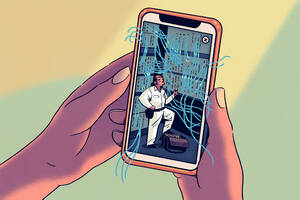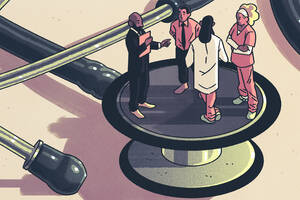Operations Aug 1, 2025
Surge Pricing in Aisle Five?
Despite concern, the use of digital price tags in grocery stores hasn’t moved the needle on costs for consumers.

Yevgenia Nayberg
When Uber started its surge pricing policy in late 2011, outrage quickly ensued. Horror stories emerged about rides on New Year’s Eve or during snowstorms costing multiple times the standard rate—in one case, 50 times the regular fare.
So when U.S. grocery retailers like Walmart and Kroger announced in 2024 that they would start using electronic shelf labels (or digital price labels) in their stores, it naturally raised alarm bells for regulators and policymakers. This new technology would, in theory, give retailers the means to suddenly raise prices during peak shopping hours or holidays or other such instances of higher demand.
“Some people might say that the fact that these stores are willing to pour so much money into installing these electronic shelf labels is prima facie evidence that they plan to surge prices, because there’s no reason to install them otherwise,” says Robert Bray, an associate professor of operations at the Kellogg School.
Such concerns have prompted several lawmakers in the U.S. to send letters to the CEOs of large grocery retailers, demanding detailed information about how they plan to use the technology.
“For regulators to be so worried about surge pricing is a reasonable fear to have,” says Ioannis Stamatopoulos at the University of Texas at Austin, “that is, if you don’t know about the operational details of grocery pricing.” But having invested years into studying pricing, Bray and Stamatopoulos, along with their colleague Robert Sanders at the University of California, San Diego, had a hunch that those fears were mostly unfounded.
“Based on everything we knew,” Sanders says, “price surging at grocery stores didn’t seem particularly plausible.”
Still, Bray, Stamatopoulos, and Sanders decided to put their intuition to the test. They examined hundreds of millions of product transactions at a major retailer’s grocery stores across the U.S. over a five-year period and found virtually no signs of surge pricing, either before or after it adopted digital price labels.
“It’s tempting to think that stores are installing electronic shelf labels in order to engage in dynamic pricing and sort of gouge customers,” Bray says, “but it’s simply not the case.”
A negligible difference
Years before the soaring cost of eggs and other groceries started dominating headlines, the team was studying product prices and the consequences of changing them. Indeed, the current research project was one of several that had its roots in prior work Stamatopoulos completed for his PhD dissertation at Kellogg.
“What got us more hooked into this topic lately was the sudden primacy of grocery prices in American life and politics,” Sanders says. “We started noticing the policy discussion around grocery pricing and thought that having hard data on this topic would be useful to policymakers who are spending what seems like a disproportionate amount of effort and time on it.”
To that end, the researchers obtained all of the transaction data from 114 grocery stores of a major U.S. retailer across four states. This included nearly 400 million transactions for about 200,000 products in 23 different departments—from bakery and produce to drugs and liquor—starting in July 2019 through July 2024. The retailer had rolled out digital price labels at its stores in staggered waves beginning in October 2022.
“The idea that [supermarkets] just optimize the price of one product at a time to get that extra 50 cents out of people—it just beggars belief.”
—
Robert Bray
Then the researchers performed an in-depth mathematical analysis of the data that allowed them to plot the movement of grocery prices at each of the stores.
As a whole, they found that the pattern of prices looked almost exactly the same before and after the use of digital price labels.
To be specific, on a typical day, a given store saw a temporary price increase (or a price surge) for 0.005 percent of its products before and 0.0056 percent of its products after it started using digital price labels—a nearly negligible difference. The trend persisted within a store’s individual departments as well.
In other words, “price surging was basically nonexistent before electronic shelf labels, and it stayed nonexistent with the labels,” Stamatopoulos says.
“And not only are the temporary price increases just insanely rare,” adds Bray, “their increase, or the delta, after the use of electronic shelf labels is also insanely small.”
Surge protection
Because airlines, hotels, and rideshare apps like Uber see real, dynamic spikes in demand, surge pricing can be an effective business model for those industries, but “there’s something inherently different about grocery stores,” says Sanders.
For one, optimizing prices at grocery stores is a gargantuan task due not only to their vast and varied product offerings, but also to the countless contracts and promotions they negotiate with manufacturers, usually months in advance.
“Supermarkets don’t really have enough fine-grain data to make this optimization problem actually work out,” Bray explains. “So the idea that they just optimize the price of one product at a time to get that extra 50 cents out of people—it just beggars belief.”
Another factor the researchers note is that grocery stores generally profit from customers purchasing a wide variety of products over an extended period of time rather than from getting them to buy a few hot commodities at a specific point in time.
“The stores’ true objective, in order to be profitable, is to grab consumers and hold onto them for as long as they can,” Stamatopoulos says. “So why would they risk pissing you off by surging the price of a particular item, if that might make you just go to a different store the next time?”
The elevated prices are actually what drove Bray’s decision, as a consumer, to make the switch from Whole Foods to Trader Joe’s. “I used to consistently shop at Whole Foods for about seven years,” he says. “And then one day, I kind of got pissed off at the prices and switched over to Trader Joe’s. Had Whole Foods priced [their goods] a little bit lower, maybe instead of getting seven years from me they could have gotten fifteen.”
A sound business decision
For their part, U.S. grocery retailers assert that they are implementing digital price labels to shore up efficiency while lowering the cost it normally takes to price and reprice their goods, not to hike up prices. And as inventory tracking improves, stores could use digital price labels to quickly run expiration-based markdowns that would help sell products they otherwise would have had to toss out.
Whether or not these assertions come to pass, shoppers can at least find comfort in the finding that digital price labels are unlikely to drive up prices at their favorite grocery store any time soon. “I know prices have been going up, and that creates pressure for households, but this is one area that you don’t really have to worry about,” Stamatopoulos says.
There may be a critical lesson for other businesses in all this as well. Despite having access to a technology that they could potentially use to give their profits a quick boost, grocery stores have largely refrained from doing so, to their long-term benefit.
“Now we see that keeping prices relatively stable was not a technological limitation; it was a sound business decision,” Bray says. “Other businesses can look at what this company did, and at what supermarket retailers have done for the past hundred years, and realize, ‘Hey, you know what? Keeping prices stable and not trying to extract every single penny from every single transaction might actually be good for business in the long run.”
Abraham Kim is senior research editor of Kellogg Insight.
Stamatopoulos, Ioannis, Robert Sanders, and Robert Bray. 2025. “Electronic Shelf Labels Have Not Led to Surge Pricing in US Grocery Retail, Despite Regulator Concerns.” Working Paper.



